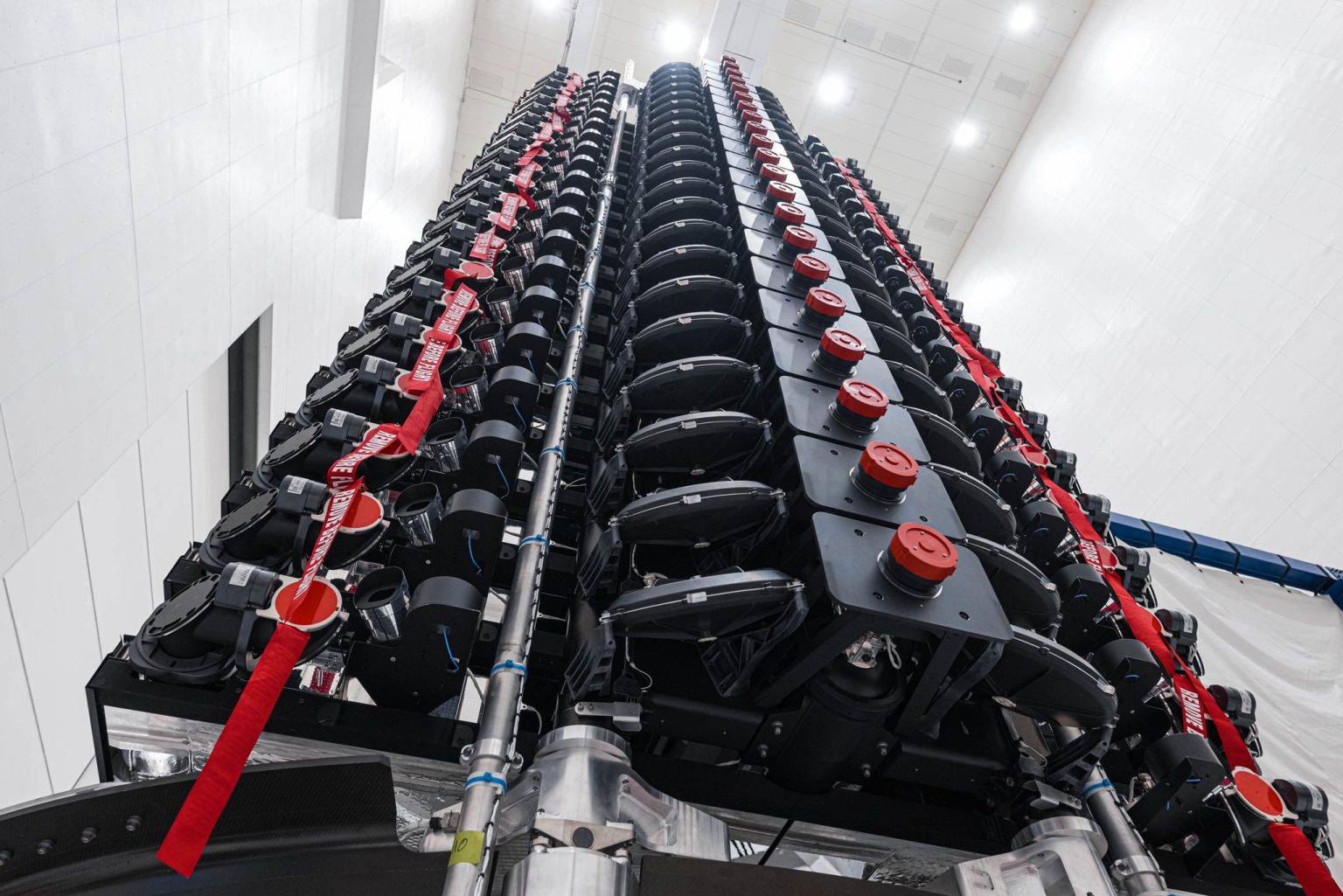We’ve filed plenty of reports here at UT warning about the potential impact of Starlink and similar satellites on the field of astronomy. We’ve gone so far as to point out that the granddaddy of space-based telescopes – Hubble – has already had some of its images tarnished by passing Starlink satellites. However, SpaceX has been aware of the problem and is working to limit their product’s brightness. The recently launched Gen2 satellites seem to have made a significant step forward – research from a team of amateur astronomers finds that the new Gen2 Starlinks are more than 10x fainter than previous Gen1 iterations.
Admittedly, that finding comes with a lot of caveats. But the pedigree of the team doing the research isn’t in question. It was led by Anthony Mallama, a senior engineer at Raytheon and an author of numerous technical papers and articles discussing Starlink’s brightness. He and six other amateur astronomers collected their own data for this paper, released on arXiv. They compared the satellite’s brightness to data previously collected by Mallama, among others, on the Gen1 craft.
Gen1 Starlinks is about four times smaller than the Gen2 craft, so logically, while they might not be as luminous, they should at least appear bigger. Their first launch was in February, and while some of the new satellites didn’t work appropriately and had to be deorbited, three from that round could make it to their planned orbits, around 480 km up. And that is where the change took place.
While the satellites were getting to their “on-station” orbits, they were, in fact, brighter than the previous generation of Starlink. However, once they reached their orbiting height, they changed into an “on-station” mode, where their orientation changed, and most importantly, a new type of reflecting material was oriented specifically to decrease their brightness to observers on the ground.
SpaceX has the stated goal of making their new generation of satellites invisible to the naked eye, and they appear to be well on their way to achieving that goal. In some cases, the observing trying to calculate the effective brightness of the satellites weren’t even able to see them with their observational equipment – meaning they were less bright than even the dimmest of stars – around magnitude eight at the time.
However, there were also outliers in the other direction. Occasional dramatic increases in brightness were also recorded. The company offered a written explanation to the astronomers that some maneuvers, such as orbit keeping and occasionally collision avoidance, had to be performed, which throws off the satellite’s orientation and limits the effectiveness of both that orientation and the reflective material it uses.
Another caveat to these overall brightness figures is that the Gen2 satellites have all been a “mini” configuration so far. While they are indeed four times the size of a Gen1 satellite, SpaceX intends to launch up to 7500 Gen2 satellites that are even bigger than those currently considered “Mini.”
Obviously, the company is taking the issue of adversely affecting astronomy seriously, and they are also taking steps to alleviate that concern while remaining a commercially viable satellite provider. It’s also clear that a dedicated cadre of astronomers will hold the company accountable for its design decisions and the impact it has on their hobby. Eventually, there will be a middle ground for astronomers and satellite operators. But right now, both camps are still required to determine where that middle ground will be.
Learn More:
Mallama et al. – Starlink Generation 2 Mini Satellies: Photometric Characterization
UT – Hubble’s Orbit Has Dropped So Far that Starlink Satellites are Photobombing its Images
UT – Starlink Satellites Are Still Bright
UT – SpaceX Describes Exactly How They’re Planning to Make Starlink Satellites Less Visible From Earth
Lead Image:
Image of Gen2 Mini Starlink Satellites in a fairing configuration.
Credit – SpaceX

